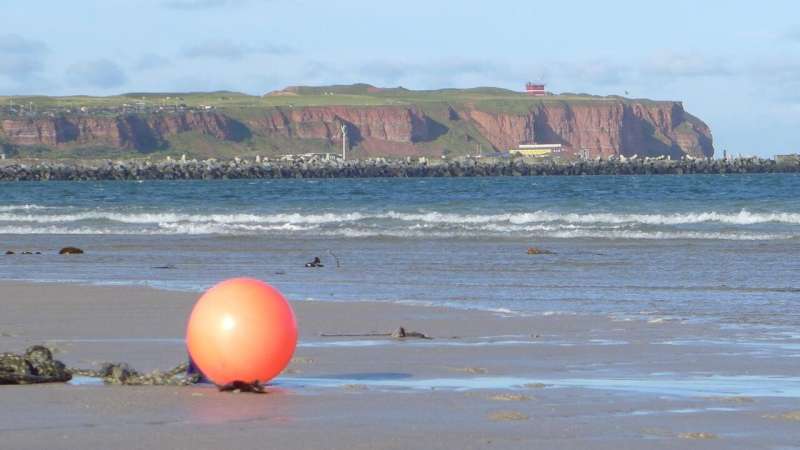Simpler than expected: A microbial community with small diversity cleans up algal blooms

Algae take up carbon dioxide (CO2) from the atmosphere and turn the carbon into biomass while releasing the oxygen back to the atmosphere. Fast algal growth during phytoplankton blooms leads to a massive transfer of carbon dioxide into algal biomass. But what happens to the carbon next?
"Once the algae die, the carbon is remineralized by microorganisms consuming their biomass. It is thus returned to the atmosphere as carbon dioxide. Alternatively, if the dead algae sink to the seafloor, the organic matter is buried in the sediment, potentially for a very long time," explains first author Karen Krüger from the Max Planck Institute for Marine Microbiology in Bremen. "The processes behind the remineralization of algal carbon are still not fully understood."
Thus, Krüger and her colleagues investigated microorganisms during spring algal blooms in the southern North Sea, on the island of Heligoland. They specifically looked at the bacterial use of polysaccharides—sugars that make up a substantial fraction of the algal biomass. Together with colleagues from the Max Planck Institute, the University of Greifswald and the DOE Joint Genome Institute in California, Krüger carried out a targeted metagenomic analysis of the Bacteroidetes phylum of bacteria, since these are known to consume lots of polysaccharides. In detail, the scientists looked at gene clusters called polysaccharide utilisation loci (PULs), which have been found to be specific to a particular polysaccharide substrate. If a bacterium contains a specific PUL, that indicates it feeds on the corresponding algal sugar.
Low PUL diversity
"Contrary to what we expected, the diversity of important PULs was relatively low," says Krüger. Only five major polysaccharide classes were being regularly targeted by multiple species of bacteria, namely beta-glucans (such as laminarin, the main diatom storage compound), alpha-glucans (such as starch and glycogen, also algal and bacterial storage compounds), mannans and xylans (typically algal cell wall components), and alginates (mostly known as slimy stuff produced by brown macroalgae). Of these five substrates, only two (alpha- and beta-glucans) make up the majority of substrates available to the bacteria during a phytoplankton bloom. This implies that the most important polysaccharide substrates released by dying algae are made up of a fairly small set of basic components.
"Given what we know of algal and bacterial species diversity, and the enormous potential complexity of polysaccharides, it came as no small surprise to see such a limited spectrum of PULs, and in only a relatively small number of bacterial clades," co-author Ben Francis from the Max Planck Institute for Marine Microbiology sums up in an accompanying comment. "This was especially unexpected because previous studies suggested something different. An analysis of more than 50 bacterial isolates—i.e. bacteria that can be cultured in the lab—that our working group carried out in the same sampling region revealed a much broader diversity of PULs," he adds.
Temporal succession of polysaccharide degradation
During the course of the algal bloom, the scientists observed a distinct pattern: In early bloom stages, fewer and simpler polysaccharides dominated, while more complex polysaccharides became available as the bloom progressed. This might be caused by two factors, Francis explains: "First, bacteria will in general prefer easily degradable substrates such as simple storage glycans over biochemically more demanding ones. Second, more complex polysaccharides become increasingly available over a blooms' course, when more and more algae die."
This study provides unprecedented insights into the dynamics of a phytoplankton bloom and its protagonists. A fundamental understanding of the bulk of glycan-mediated carbon flow during phytoplankton bloom events is now within reach. "Next, we want to dig deeper into processes underlying the observed dynamics," says Krüger. "Moreover, it will be interesting to investigate polysaccharide degradation in habitats with other carbon sources, such as the arctic seas or the sediment."
More information: Karen Krüger et al, In marine Bacteroidetes the bulk of glycan degradation during algae blooms is mediated by few clades using a restricted set of genes, The ISME Journal (2019). DOI: 10.1038/s41396-019-0476-y
Journal information: ISME Journal
Provided by Max Planck Institute for Marine Microbiology




















